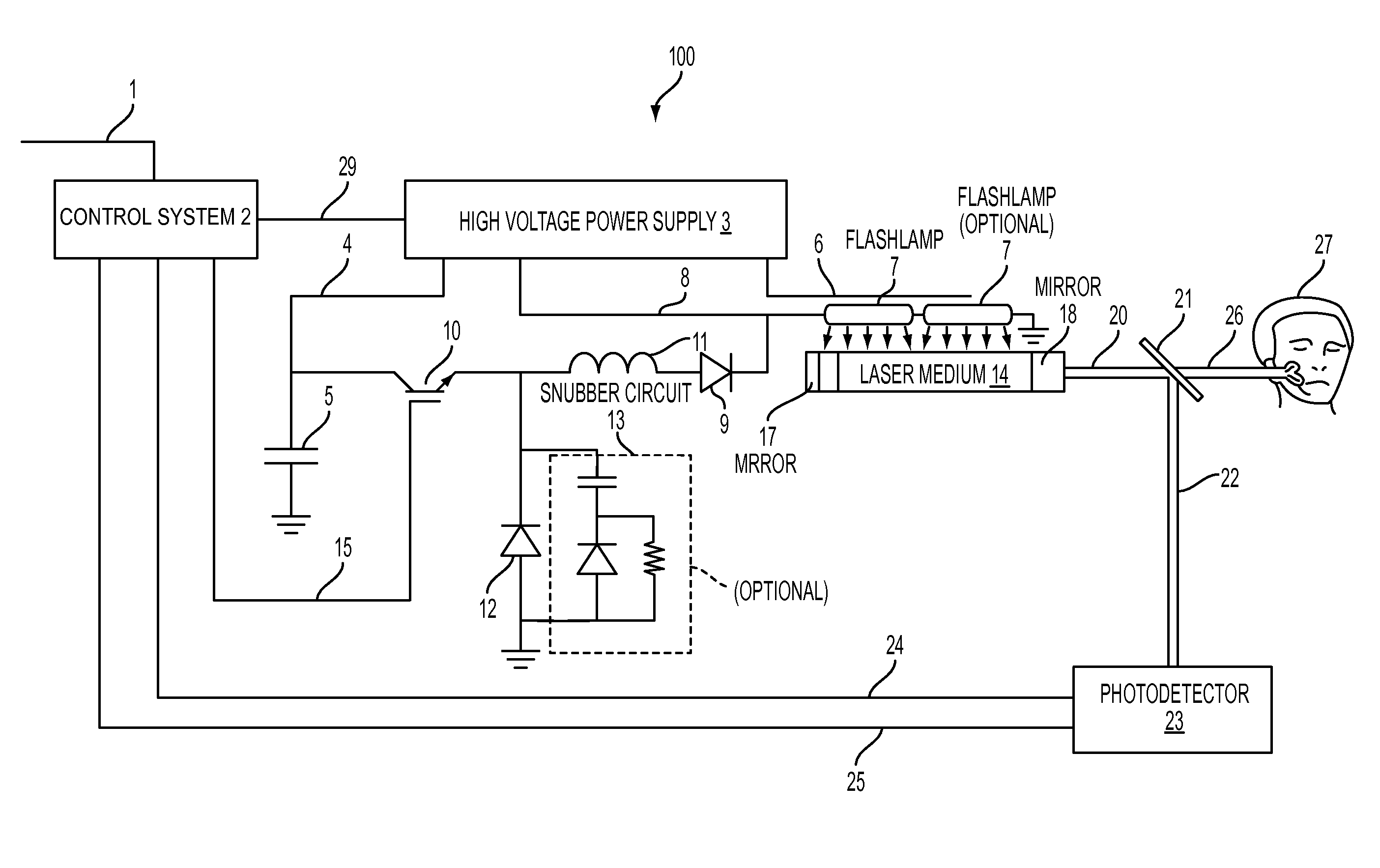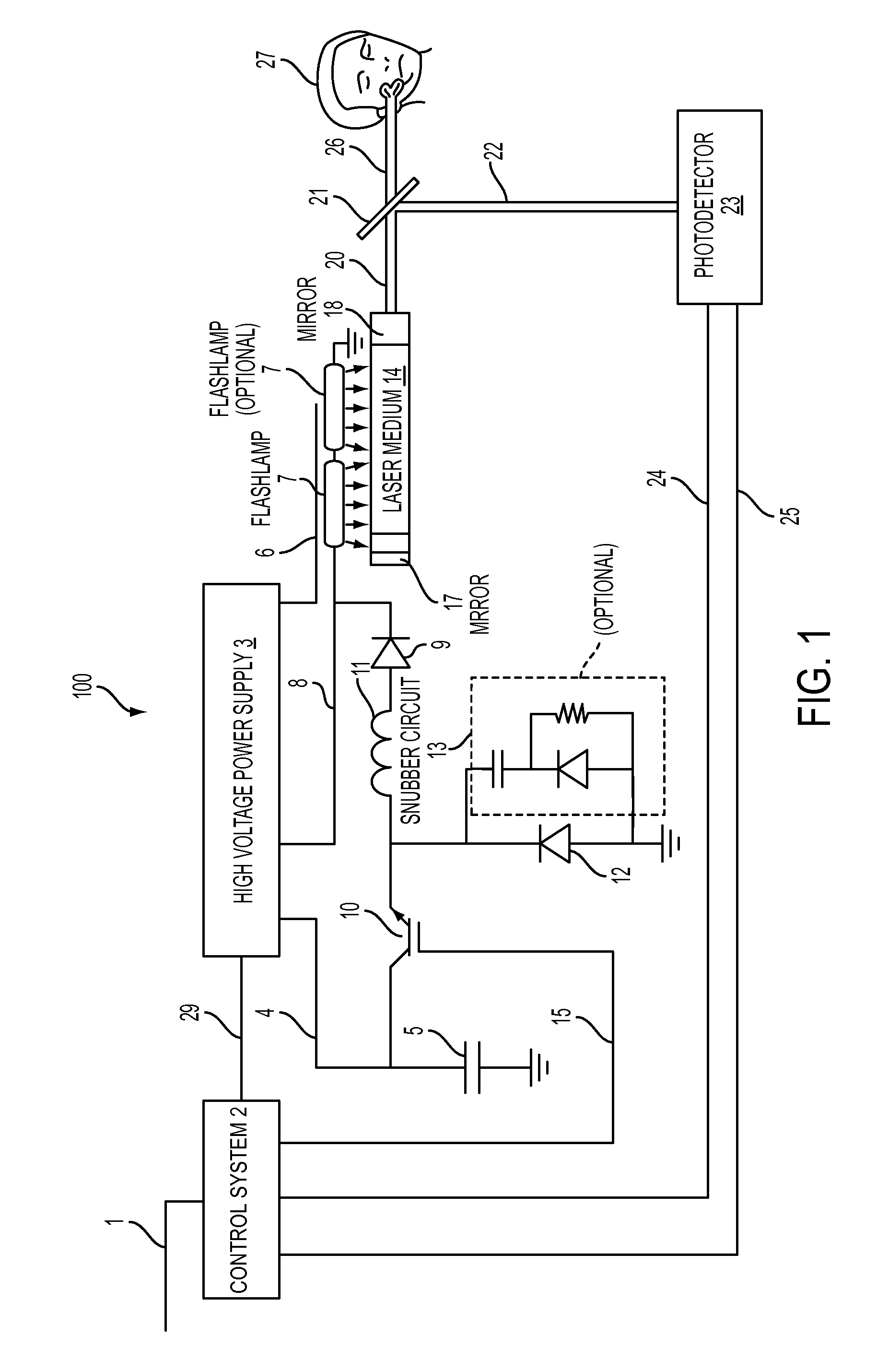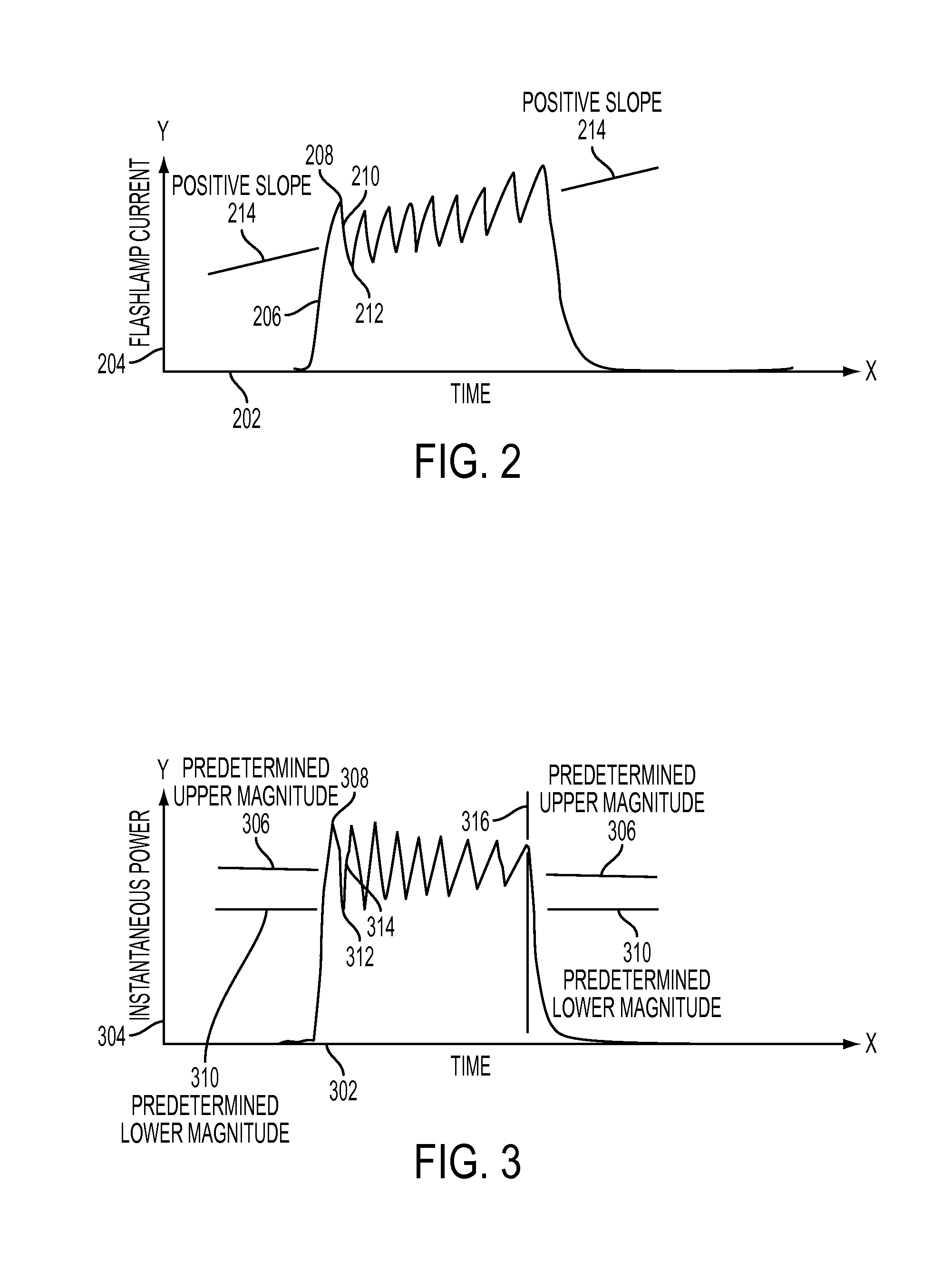Voltage bucking circuit for driving flashlamp-pumped lasers for treating skin
a voltage bucking circuit and laser technology, applied in the field ofdermatological lasers, can solve the problems of complex system, limited number of capacitors used in a series of energy storage capacitors, and energy delivered in each laser sub-pulse needs to be adjusted, so as to achieve high current modulation, simple and compact driving circuit configuration, and rapid dye replacement
- Summary
- Abstract
- Description
- Claims
- Application Information
AI Technical Summary
Benefits of technology
Problems solved by technology
Method used
Image
Examples
Embodiment Construction
[0027]Lasers and other light sources are often used for the treatment of skin disorders and to improve the appearance of the skin. The heat produced by the light energy can modify structures within the skin and beneath the skin. Typical applications can include, for example, removal of hair, pigmented lesions, tattoos, vascular lesions, wrinkles, acne, skin tightening, and / or the like. Lasers are often the preferred light source because a laser beam has a narrower wavelength bandwidth than light from other sources. In addition, lasers can be made with much shorter pulse durations than other light sources, thereby maximizing the temporal selectivity of the targeted structure.
[0028]FIG. 1 illustrates one embodiment of a system 100 including an electrical circuit capable of driving one or more flashlamps to pump a laser. A flashlamp 7 is driven with an insulated gate bipolar transistor (IGBT) 10, an inductor 11 and a diode 12 connected in a voltage bucking configuration. The flashlamp ...
PUM
 Login to View More
Login to View More Abstract
Description
Claims
Application Information
 Login to View More
Login to View More - R&D
- Intellectual Property
- Life Sciences
- Materials
- Tech Scout
- Unparalleled Data Quality
- Higher Quality Content
- 60% Fewer Hallucinations
Browse by: Latest US Patents, China's latest patents, Technical Efficacy Thesaurus, Application Domain, Technology Topic, Popular Technical Reports.
© 2025 PatSnap. All rights reserved.Legal|Privacy policy|Modern Slavery Act Transparency Statement|Sitemap|About US| Contact US: help@patsnap.com



